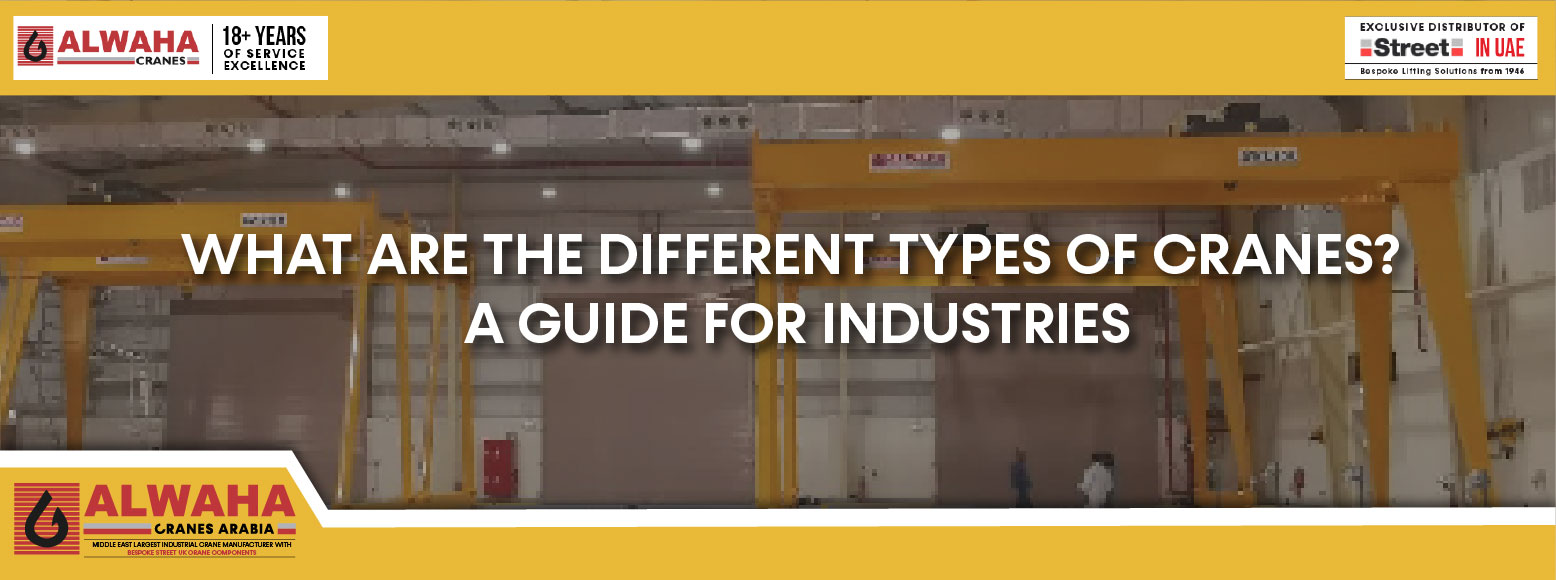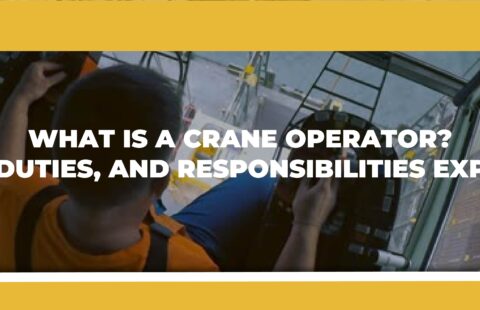
What Are the Different Types of Cranes? A Guide for Industries
Cranes make work a lot easier and if you ever walk past a construction site, you’ll notice these huge machines lifting massive loads with ease. You’ll find them everywhere, whether it’s for building skyscrapers or moving shipping containers. But there’s not one crane but different types of cranes and that makes different jobs possible. So, let’s see what the various cranes are and why each one matters.
In this blog, we’ll discuss all about cranes and their types and how each machinery functions.
Why Do We Need Different Types of Cranes?
Different industries have different needs, so they can’t use one single crane for everything. Every different work needs a different crane that does the work efficiently. For example, a tower crane works best when there’s construction going on for a tall skyscraper and a mobile crane is something that’s perfect for work which requires movement and flexibility.
And because every crane is different in its functioning, having a good understanding of the various types of cranes is important. This will help industries from safety and as well as monetary risks.
The Different Types of Cranes Used in Industries
1. Mobile Cranes
These cranes fall under the category of versatile cranes. Mobile cranes are those that are mounted on trucks or carriers. And as their name suggests, these cranes move from site to site easily and this quality makes them great for quick lifting and projects that need flexibility.
These cranes are best for – Quick lifting tasks, urban construction and other projects that require movement.
Now there are also many different types of mobile cranes. Some of them are:
- Crawler Cranes – These crawler cranes move on their tracks and are best for long-term projects.
- Floating Cranes – These cranes are also known as crane ships as they work in water. Floating Cranes are helpful in moving shipments and other projects near the sea.
- Truck-Mounted Cranes – These cranes have a carrier (truck) and an arm. They move from one place to another and carry loads easily.
2. Tower Cranes
These tall giant cranes are typically used as construction cranes for building sky-high buildings. Tower cranes can safely lift concrete, steel, and heavy materials because of their easy rise to high altitudes. A crane operator operates the entire crane from an operating cab on these machines.
These cranes become really useful for building tall buildings that require a lot of assistance. So that’s why these cranes are best for – High-rise buildings, bridges and mega projects.
3. Overhead Cranes
Overhead cranes are prominent in industries. These cranes are also called bridge cranes because of their construction that resembles that of a bridge. Unlike mobile cranes, these cranes don’t move on roads but on rails above on beams.
These cranes are mostly used in industries as they have great reliability and show good efficiency. Also, they are best for moving loads around in manufacturing units and warehouses.
4. Gantry Cranes
One kind of overhead crane is the gantry crane. There is a major difference between the two, though. Rather than being fixed to the ceiling, these cranes operate on rails at ground level.
You’ll commonly find them at shipyards and ports as these are best for loading and unloading shipping containers.
5. Jib Cranes
These are also another variant of overhead cranes. The jib or arm is mounted on a wall or a pillar for moving things around. These types of cranes are often installed permanently at a workstation. Jib cranes are best for handling loads at manufacturing units and warehouses.
6. Telescopic Cranes
These cranes come with a long arm (or boom). This arm extends and retracts just like a telescope, hence the name. You can find them fixed at a site and also mounted on a truck. All of this makes them highly flexible for tasks which require good reach.
Telescopic cranes are best for – Short-term construction, rescue operations and situations where height adjustment is crucial.
7. Loader Cranes
Loader cranes are smaller compared to others. They are mounted on trucks and are mainly used to load and unload heavy goods onto the vehicle.
These cranes are best for – Transportation and logistics.
8. Level Luffing Cranes
These cranes are special because their hook always stay level while lifting. This makes them perfect for tasks that require careful handling of loads.
So, Level Luffing Cranes are best for – Shipbuilding yards and factories.
How to Choose the Right Crane
If you’re looking to install a new crane for your upcoming project and are confused about choosing one, then don’t worry. Here’s how you can pick the right one depending on your project.
1. Nature of the project –
The first thing you need to evaluate is the type of project you’ll be handling. Is it construction work? If so, for a tall building, you would require a tower crane and for mobility during site construction, a mobile crane, like a crawler or truck-mounted crane, is great. For industrial work, you can choose overhead cranes.
2. Terrain –
The condition of the ground matters too. For example, smooth grounds can easily support truck-mounted cranes or other mobile cranes. And if the terrain is rocky or muddy, then the best ones are crawlers and rough terrain cranes.
3. Weight of the load –
There’s a weight load chart for each crane as not every crane can handle all types of weights. Smaller mobile cranes are perfect for light or medium lifts. And if it’s for extremely heavy loads, overhead cranes can work well.
4. Mobility needs –
You should also consider whether your project requires a lot of movement or if it’s a job that can be done from a fixed space. For projects that don’t require loads to move from one site to another, overhead cranes or tower cranes are a great fit but if it’s about movement, then mobile cranes are your go-to.
Safety First
In the industries that deal with heavy lifting and loads all the time, safety becomes of utmost importance. When it comes to using heavy machinery like cranes, taking precautions is necessary. Also, the crane operators are responsible for both smooth operations and the safety of the people and property. So, training them properly beforehand is a wise choice.
The people dealing with crane operations should follow safety guidelines and also do regular maintenance checks. This will help save a lot of trouble later on!
For more insights, check OSHA’s crane safety guidelines.
Conclusion
With all the different types of cranes, they can appear confusing to many. However, a deep understanding of their types and functions helps people realise their role in keeping industries alive. Every type of this machinery is made to do a set work that isn’t humanly possible.
Understanding the types of cranes will help industries and businesses pick the right crane. This does two things – one, it helps with smooth operations and with efficiency and safety and second, it helps the business grow at a fast pace with all the work done perfectly.
FAQs
1. What is the most common type of crane?
The most common cranes one finds are mobile cranes because these types of cranes are flexible and can move from one place to another, carrying loads safely.
2. Which crane is used to build skyscrapers?
Tower crane; because these are tall and can lift heavy things up to great heights. So, you’ll find these cranes being used for high-rise construction.
3. Can cranes be used in factories?
Of course. Many factories use overhead cranes inside to move heavy loads efficiently.




